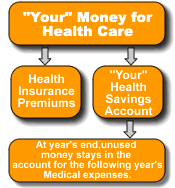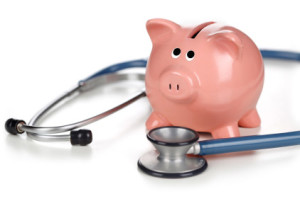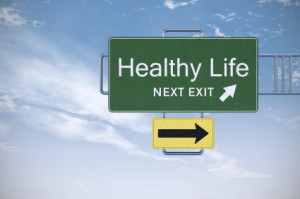Over the past few years, the entire country has been debating health care in our country. Those on the left say that our health care is so expensive that government must intervene in the marketplace and provide health care for those who can’t afford it. Many on the right, who believe in limited government, simply counter by saying that the government can’t provide all things to all people — and that the federal government should especially not play this role.
The left definitely has the upper hand here in terms of the “easy” argument. Who doesn’t want to help those in need? And the left also talks about health care. The debate is really about health insurance. But when the left frames it in terms of care, anyone against their plan automatically becomes an opponent of giving care to those in need.
The truth is that no one in critical need of health care is denied care. We have ambulances and hospitals who will take in anyone from shooting victims to heart attacks without question. Emergency rooms, after all, are set up to save lives. Of course, once taken into emergency rooms, those bills will stack up for anyone without any kind of health insurance. And for those unable to pay, that burden falls to everyone in the system – at the end of the day, that means insurance customers and taxpayers. It increases the cost of health care for all of us because we’re all paying for the uninsured.
So, this means we need to find a solution to insure everyone. Yes, everyone. That’s a big, hairy, audacious goal.
Some will say – in order to do that, we need to have government be the insurer (in a single-payer system). Others will say we simply need government to cover the cost of insurance (in a crony capitalist sort of arrangement with insurance companies benefitting – as Obamacare is set up to do right now). Both of those approaches are wrong and history only proves it.
There is a reason why health insurance (and health care) is so much more expensive today than it was a half century ago. One of the main reasons is due to government interference in the marketplace, when Medicare and Medicaid began as part of the “Great Society” programs. (Of note: the “war on poverty” was started as part of that same plan and we see how great those results have been).
Government intervention like this isn’t the only cause of rising health care prices. Insurance companies are to blame as well. Anytime you put a “wedge” between the patient and the provider (doctor), you increase the costs. The health insurance companies and the government are both wedges between the patient and the provider. We need to get both out of the way. Instead “Obamacare” just adds to this problem. It increases the wedge between the patient and the provider.
I believe the solution is to incentivize everyone to have a health savings account. I have had one for the past five years. It’s great. It also doesn’t depend on my employer, though my employer does provide me with a health care benefits plan that allows me to invest in my own health savings account.
But I don’t necessarily need my employer. And if I left my job tomorrow, guess what? I still have my health savings account. It is portable. I take it with me. I don’t need “Cobra” (you know, that expensive temporary insurance plan many people pay for when they are “between jobs.”) Speaking of between jobs, many of the statistics of the uninsured include people “between jobs,” meaning many of those who are uninsured are only temporarily uninsured while they are looking for work. But a health savings account for all fixes this problem and would bring down millions of those numbers instantly.
So, how does a health savings account work? First, you choose an insurance company with plans that suit you. Second, you choose a plan that has a low monthly premium and a high deductible. You can also adjust this to fit your lifestyle and how much you can personally afford each month for health insurance. Just like with auto insurance, the lower the monthly premium, the higher the deductible (which you only pay when something bad happens). Then, instead of paying all the money you would normally give to the health insurance company, you would instead put the rest of the money you “saved” into your health savings account – you bank it.
For example, my health insurance company is Blue Cross Blue Shield of Florida. And my health savings account is with Wells Fargo. Like most Americans, I have a job with health benefits. My employer pays into a health insurance “group plan” for most of the employees at my organization. The money they would pay for that for me they instead give me a check for. I take that check – deposit it into my regular checking account. I then write my own check to the insurance company (every two months) and then put the remaining funds (that would normally go to the group plan) into a health savings account. Each month, I watch that account grow. If I wanted to add more, I could (there are limits, but they are much higher than I would add). In fact, I could even “invest” that money in the stock market (like a 401k). I don’t do this though. I just sort of play it safe by keeping in a regular savings account.
Anytime I make any health expense – a regular check-up at the doctor, the dentist, the eye doctor, any specialist, or even purchases at the pharmacy or for prescription eye glasses (and sunglasses) – I take out my Wells Fargo Health Savings Account Visa Check Card and those visits are easily paid for with the money I’ve accumulated. And if I have something “catastrophic” happen, guess what? It’s all covered. I simply have to pay my deductible (and all health related expenses for the year are part of that deductible).
Two and half years ago, I had my appendix taken out. I saw the bill from the hospital. After the anesthesia, the surgery to remove my appendix, and my one-night hospital stay, the real cost was around $16,000! However, I only had to pay up to my deductible (which was $2,500 at the time). Because I already had paid about $500 worth of health costs that year (between the dentist, doctor, and eye doctor, etc), the cost was actually somewhere just south of $2,000. But guess what? I had more than that accumulated in my savings account – simply over the previous two and a half years. I felt little pain – except maybe some temporary pain in my stomach (I’ll blame the appendix, not my insurance plan).
Health savings accounts put you in control of your health care and gets the insurance companies out of the way. I talk to doctors and health insurance agents all the time (in both my job in the public policy field and through my own health care needs). Many of them can’t understand why more people don’t do a health savings account.
I’ll tell you why. People are afraid of change. They are comfortable in their little group plans. They think something catastrophic will put them into debt if they have a health savings account. They like their little co-pays. It just takes a little bit of thought and investment to realize a health savings account is no more expensive than the health insurance plan you currently have. In fact, you save money. It only “errs” in your favor!
Did you know that 50% of Americans (with health insurance) didn’t visit a doctor in the past 12 months? 75% of Americans went to a doctor either once or less. They didn’t use their health insurance plans – plans that they are paying about $3,000 a year for on average! When you don’t use your insurance (when nothing happens to you) that’s a good thing. But does the insurance company call you up at the end of the year and say, “Hey, you didn’t use your insurance, so we’re going to give you some of this money back.” Of course they don’t. But with a health savings account, that’s exactly what you’re doing. You’re in control of your health care costs and you can take that money you didn’t use and roll it over year after year after year. And if you do have health issues, you then have funds to pay for those costs.
This solution – for everyone – will get the government and the insurance companies out of the way in your relationship with your doctor. Prices can be set accordingly and health costs will come down dramatically – by at least 25%, maybe more. So, at the end of the day, there will be more money to put away in those health savings accounts and we’ll all feel great knowing we and our fellow Americans are all covered for those catastrophic emergencies, that we can all afford our health insurance plans, and that most importantly, we are all are in direct control of our health care.




